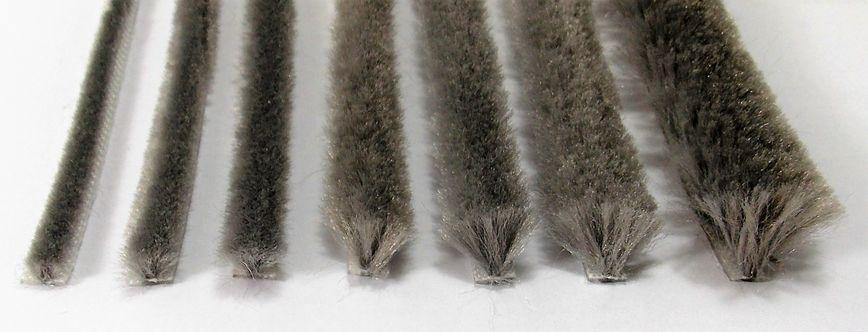Rubber seals are corrosion and heat resistant and can maintain elasticity under long-term working conditions. They can also be used when installed on rough metal surfaces. They can be locked to prevent the ingress of liquids and dust. The sealing part is a lip structure, which has excellent sealing performance. Once ordered, everything from sealed mold design and formulation to inbound inspection and deburring can be worked out together.
By selecting the correct combination of compound and material geometry, extraordinary performance can be achieved, where the specifications and design of the rubber seals play a critical role in the longevity of the application. Here is a list of sectoral applications:
Industrial
The machinery-industrial sector uses a wide range of pneumatic actuators and controls that pose several unique challenges, for example, related to complex geometries. Usually, in this type of application, elastomeric membranes and diaphragms are used, which, depending on the complexity of the application, may require a customized design of the components. In the case of standard mold applications, however, a simple O-Ring can offer the optimal sealing solution. We have more information on pneumatic seals for all applications.
When choosing rubber seals for the machinery-industrial sector, it is important to prefer high-performance sealing materials that meet the main application requirements, such as resistance to temperatures and extreme pressures. Two known elastomeric materials suitable for this typology include:
- EPDM: with optimal tensile properties capable of operating at temperatures ranging from -60 ° C to 288 ° C, they offer a versatile solution and resist the corrosive action of chemicals. However, it should be noted that these seals are not compatible in applications with synthetic, mineral, and hydrocarbon fuel lubricants.
- FKM: An FKM elastomer is a highly fluorinated polymer that offers exceptional chemical resistance, exhibits low gas permeability, and can withstand temperatures ranging from -50 ° C to 250 ° C.
Foam rubber seals
The advantages of waterproofing in constructions and the building sector with extruded profiled seals multiply in many applications. The possibility of using foam rubber seals, which, according to the needs, can be soft, malleable, and elastic and have a minimum mass even for great profiles. The normal working temperature volume varies from - 40 ° C to + 100 ° C and can be used safely even where compact rubber seals cannot be used. We produce seals in EPDM or SBR / EPDM shapes.
Self-adhesive rubber seal
The easy assembly gives the advantages of applying extruded seals in compact or expanded rubber. With contact glues with the separating layer, easy handling with the seal is achieved during transport and assembly. After removing the protective band, the profile is glued with simple pressure on the clean surface of the seal.
Compact rubber: its uses
The tight rubber is constantly used as an anti-vibration for spacers for the production in the industrial sector of:
- Rubber profile seals
- Coatings, industrial floors, and conveyor belts
- Products belonging to various sectors such as mechanics, petrochemicals, construction, and automotive.
Generally, compact rubber produces seals subjected to particular friction to guarantee a high level of sealing. It should be noted that the profiles of the rubber seals are made with different substances through the combination of specific elements that determine their physical and mechanical characteristics.
What factors influence the use of compact rubber
Once the company has assessed the conditions of use concerning the resistance level, it can choose which type of compact rubber material to use for the seals. The degree of resistance depends on different factors, such as:
- Impermeability to the different types of gas used
- Temperature: that is to know the minimum and maximum degrees, precisely the present ambient temperature
- Exposure to fats and oils: nature of the same, contact by immersion on the surface
- Exposure to fatty acids: temperature limits, type, and concentration
- Exposure to atmospheric agents: infrared rays, UV, and rain
- Mechanical capacity: traction, compression, vibration, bending, and abrasion.




